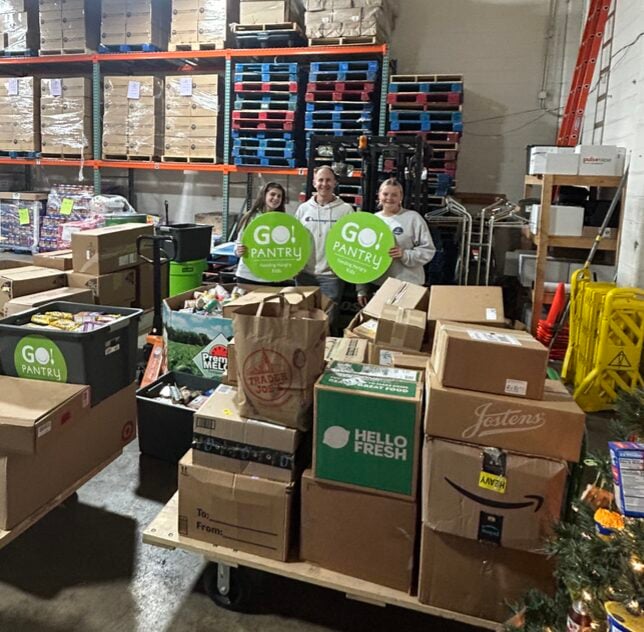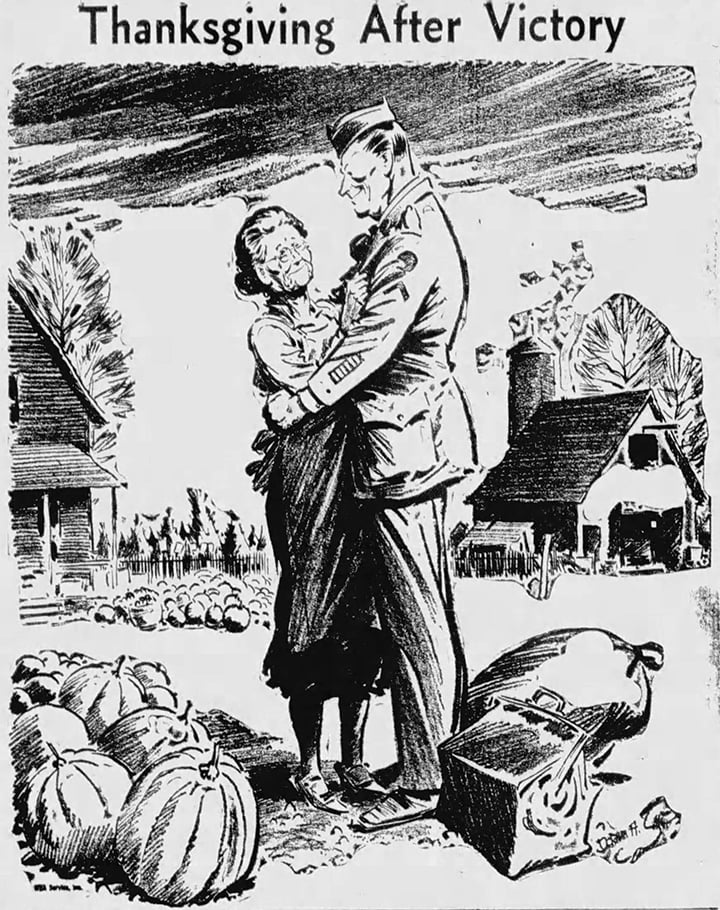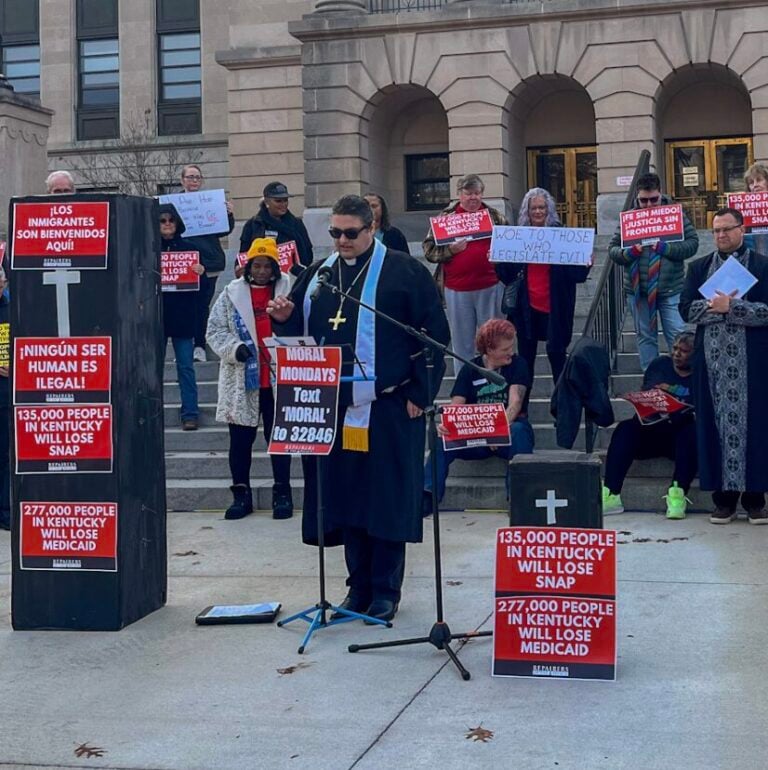Saturday was a glorious day for running. The pre-dawn hours were crisp and cool. Or, perhaps, crisp and chilly. Or, according to some, crisp and downright cold.
And thus brought the runners’ lament: “What the heck am I going to wear?”
Now, common sense would tell you that when it’s 40 degrees and dark out, you need pants, a shirt, and a jacket of some kind. Gloves, most likely. A hat would be a nice touch.
But runners don’t think like that. Instead, we have what’s called the 20-degree rule: Dress as though it’s 20 degrees warmer than the thermometer reading. Some push for a 30-degree rule, while the more conservative among us opt for 10 degrees. Either way, it’s based on the thought that once you get to running, you are going to warm up rather quickly.
That’s why we also have a saying: “Dress for the second (or third) mile.” You may be cold at the beginning, but once you’ve been active for 15 to 20 minutes, you’ll start to feel much warmer — and you’ll be glad you left the heavier clothes at home.
Back to Saturday morning. When I went to bed Friday night, I laid out my running outfit based on the forecast of 32 degrees at 6 a.m.: Tights, a quilted, long-sleeved shirt, woolen hat, and gloves. But when I awoke, the thermometer read in the mid-40s, so the tights went back into the drawer in favor of shorts. The quilted shirt was exchanged for one not quite as thick. The woolen hat was ditched for a regular baseball cap. The gloves, however, stayed.
Hey, my hands get really cold. Indeed, as I sit here Monday evening typing this before I take off for my run — shorts and sleeves; it’s in the 60s — my hands are freezing. I’m thinking of putting on the gloves.
But I digress.
As I arrived at the meeting site Saturday around 6:30 a.m., it remained dark, but I could see people in various outfits — the hard-core runners shivered in shorts and T-shirts. while others wore jackets, hoodies, and tights. Some were a mixed bag, short pants with a long-sleeved shirt. Some wore removable clothing: hats that could be taken off, sleeves that could be unbuttoned and pocketed, jackets that could be shed and tied around the waist.
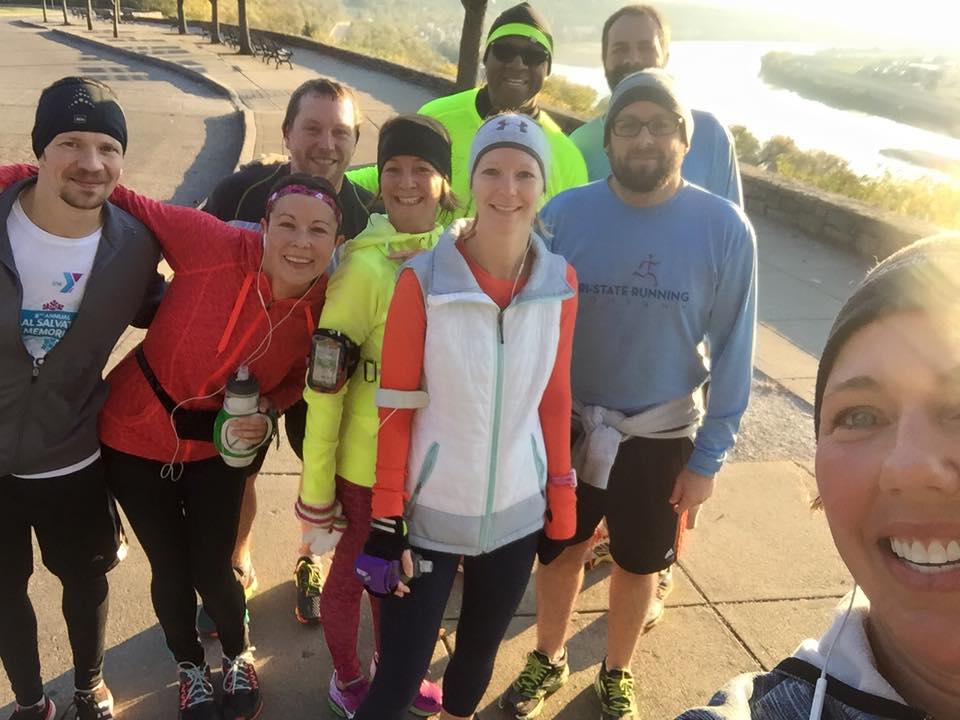
Still, at this time of year particularly, it’s pretty much a guessing game.
“I don’t decide,” said Emily Leising, a runner from Independence. “I guess; I dress, and I go — and usually regret my decisions either right away because I didn’t dress warmly enough, or later in the run, as I’m carrying more and more of my outfit because I dressed too warmly. Haha. I kid. This is only 90 percent true.
“In the last couple of years I have learned myself so well that I know I can still pull off shorts while temps are in the 40s. I know that low 50s and below I need gloves, even if I don’t need anything else. I purchased a bunch of arm sleeves, because those are just right for the in-between weather running. And, when all else fails and I can’t figure it out, I use the Runner’s World ‘what should I wear’ page — and it’s usually better at telling me what to do than I am.”
Here is that very page: http://www.runnersworld.com/what-to-wear
Also, I have been told, there’s an app for that: What to Wear.
“It shows the local temperature of where you are and then recommends what you should wear running,” said Stacey Long Herdering, with the Runners’ Clubs of Greater Cincinnati.
All these suggestions, of course, have a big hedge: “It depends.”
“It depends on how long you will be running,” said Suzanne Livezey Peters, from Union, who runs with the Tri State Running Company. “As a rule, it’s better to be cool/cold at the beginning. I’ve overdressed, which results in more sweat which leads to getting chilled. Balance is the key. I plan to layer a couple of thin layers that I can peel and reapply throughout the run.”
It depends on whether you’re planning a long run and will be out for hours, or whether you’re planning a quick three-miler. It depends on whether you’re running in the evening or in the morning — 40 degrees feels a lot colder as the sun goes down than it does as the sun rises.
It depends on whether it’s raining or damp. A dry 35 degrees can be a lot more comfortable than a wet 45 degrees.
It depends on your personal preference.
Personally, I tend to stick with short sleeves until it hits around 45, then I bring out the long-sleeve shirt. When the temperature drops another 10 degrees, the long tights come out.
The 20s mean a warmer shirt, and probably a skull cap. Down into the teens and I’m donning a running hoodie. Single digits mean a second pair of socks, a balaclava along with the hoodie, which is over a couple of shirts, and a double pairs of tights.
Yeah, and layers. Everyone said layers are the key. Arm sleeves. Light jackets. Hats. Gloves. You can take them off and put them in your pockets during the run.
“Typically I run with the group right after work,” said Danielle Rupe, whose group is the Queen City Running Club. “I’ll usually pack a variety of running gear so I’m ready for whatever the weather. I think the biggest mistake runners tend to make when it gets cool is overdressing.”
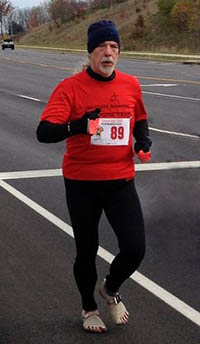
Paul Long writes weekly for the NKyTribune about running and runners. For his daily running stories, follow him at dailymile.com or on Twitter @Pogue57

















